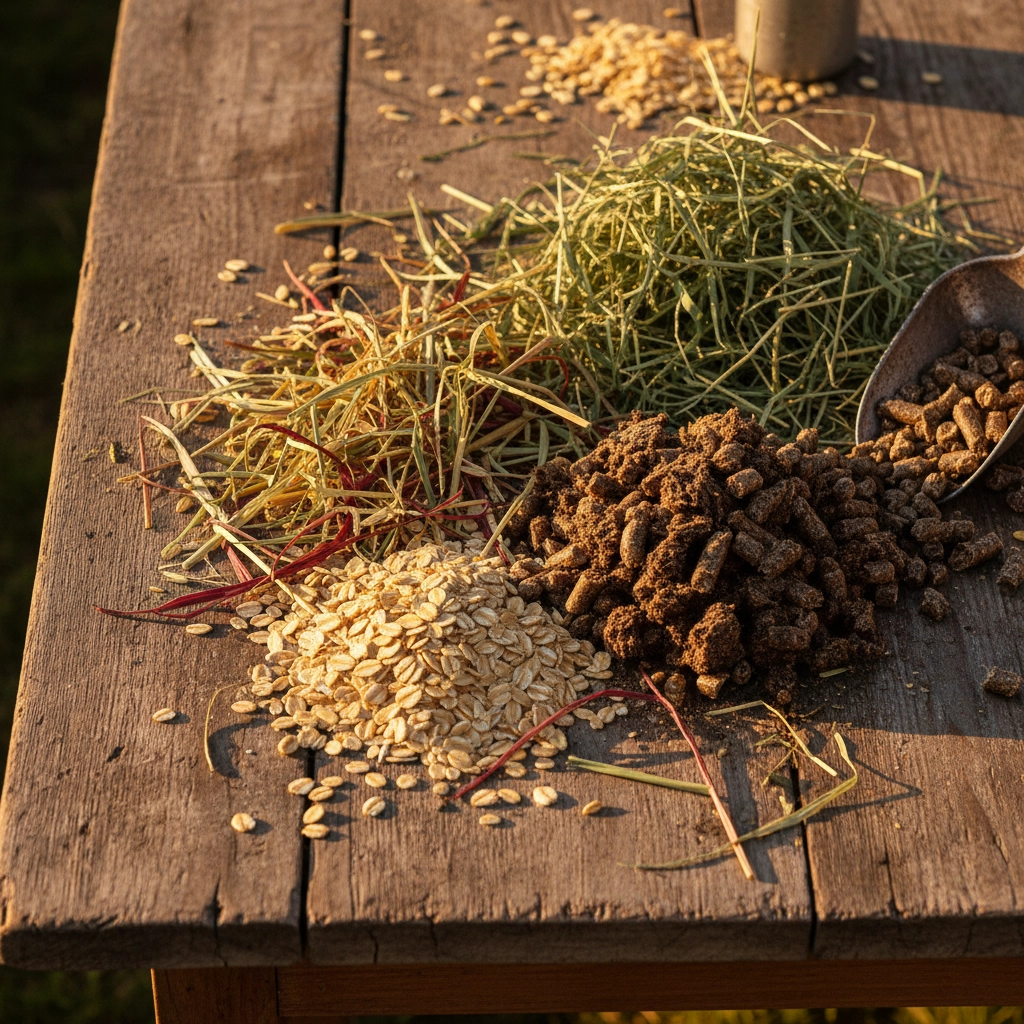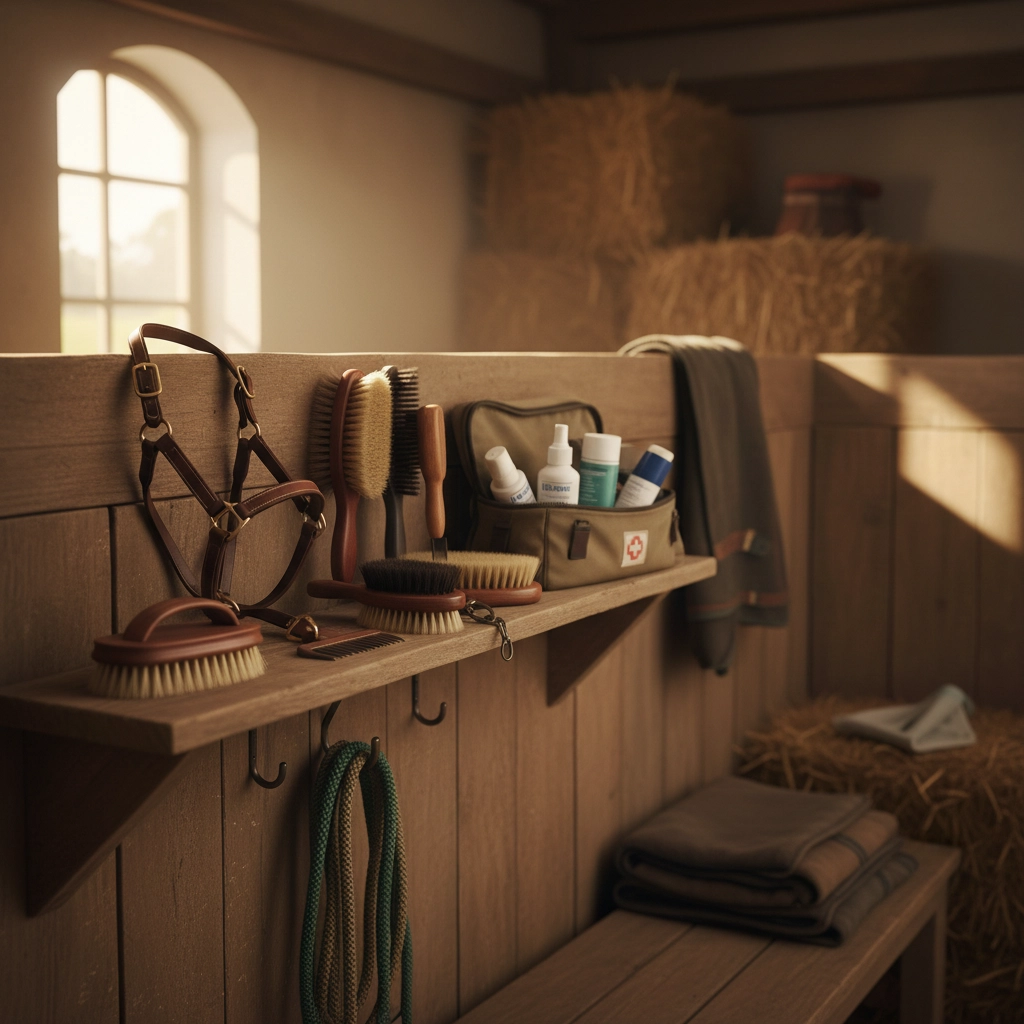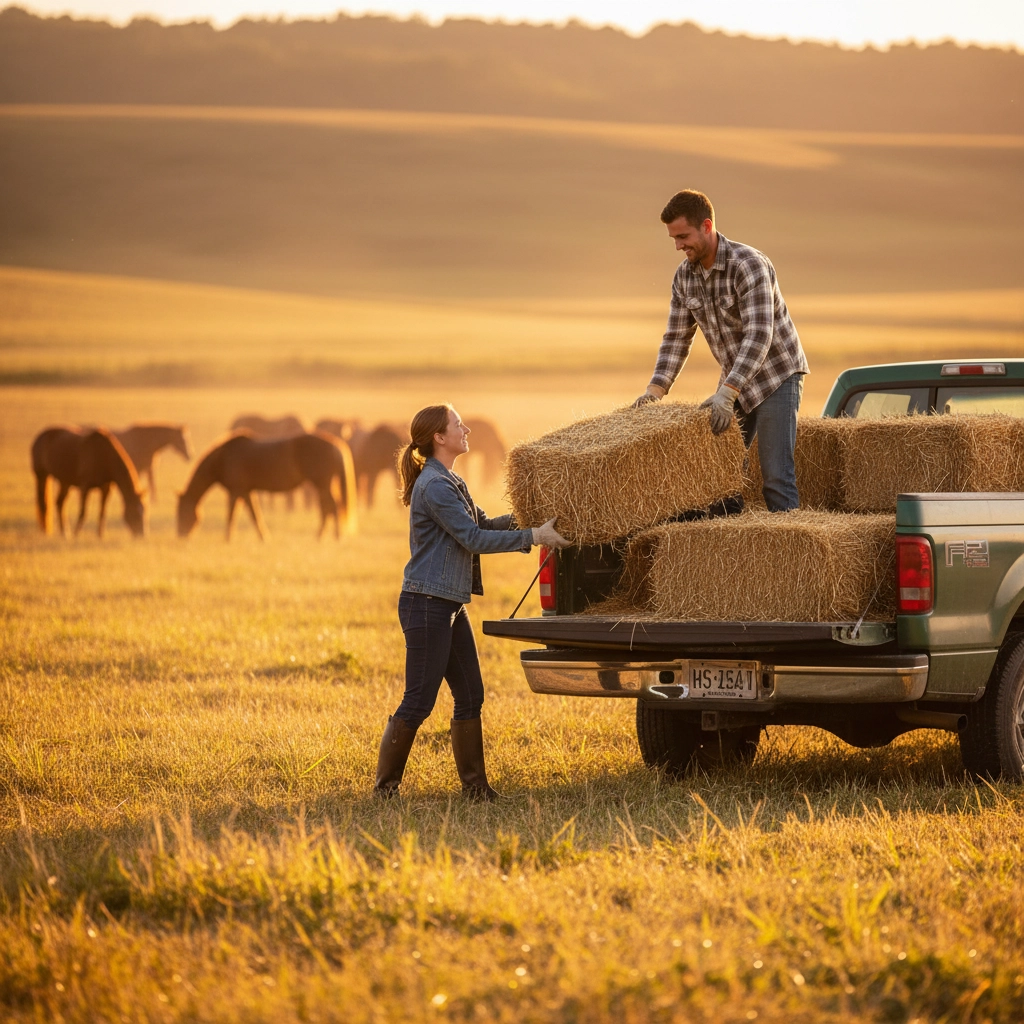Dreaming of horse ownership but worried about the costs? You're not alone! 🐴 The good news is that with some smart planning and savvy shopping, you can absolutely own a horse without breaking the bank. Here's how to make your equestrian dreams a reality while keeping your finances firmly in the saddle.
Start with the Right Horse 🎯
Your biggest money-saving decision happens before you even buy a horse. Easy keepers are absolute gold mines for budget-conscious owners – these clever horses maintain their weight beautifully on minimal feed. Look for horses that thrive on grass alone or need just a small amount of supplemental feed.
When you're horse shopping, ask detailed questions about their current diet. How much hay? What type of hard feed? A horse currently living happily on basic grass and a handful of cubes will cost you far less than one requiring expensive specialist feeds.
Hoof health is your wallet's best friend. Horses with strong, healthy feet that can go barefoot year-round will save you hundreds annually. Regular trimming costs around £35-50 every 6-8 weeks, but add shoes and you're looking at £100+ each visit. Some horses needing remedial work can cost £200+ per shoeing!
Smart Feed Choices That Won't Empty Your Pockets 💰
Quality forage should be the foundation of your horse's diet – it's both the healthiest and most economical approach. Good hay plus pasture access provides excellent nutrition at the lowest cost per calorie.
Here's where buying in bulk becomes your secret weapon. At Ashurst, our bulk feed options and local delivery service can save you serious money. Instead of buying small bags weekly, invest in larger quantities when you find quality deals.

Pro tip: Don't be tempted by cheap, poor-quality hay. Horses won't eat it, or worse, it could cause health issues that'll cost you far more in vet bills. Sometimes spending a bit more upfront saves you hundreds later.
Consider these budget-friendly feed strategies:
- Stretch premium feeds by mixing with quality chaff or soaked sugar beet
- Use hay nets to slow eating and reduce waste
- Feed little and often rather than large meals to maximize nutrition absorption
- Seasonal feeding – adjust rations based on grass quality and weather
Bedding Solutions That Work for Your Budget 🛏️
Your choice of bedding significantly impacts your monthly expenses. Straw remains the most economical option for most horse owners, especially if you can source it directly from local farms.
Wood shavings in bulk often work out cheaper than bagged options. Many suppliers offer delivery services – perfect for those without trailers. Paper bedding might seem expensive initially, but it's super-absorbent, meaning you use less and muck out less frequently.
Consider a deep litter system for suitable horses. This method uses less bedding overall and creates excellent compost for your paddocks (or to sell to gardeners – bonus income!).
Equipment Essentials: Buy Smart, Not Often 🛠️
Quality over quantity is your mantra here. Better to have fewer, well-made items than lots of cheap gear that needs constant replacement.
Timing your purchases around sales can save you 20-50%. End-of-season clearances are goldmines for non-urgent items. Sharing expenses with other horse owners makes sense for bigger purchases like trailers or expensive tools.
Never compromise on:
- Quality headcollars and lead ropes (safety first!)
- Well-fitting tack (poor fit = expensive vet bills)
- Basic first aid supplies (prevention is always cheaper than cure)

Healthcare: Prevention Pays 💊
Preventive healthcare is where you'll save the most money long-term. Vaccinations cost far less than treating the diseases they prevent. However, not every horse needs every vaccine – chat with your vet about creating a tailored program based on your horse's lifestyle.
Worming smart rather than frequently saves money and is better for your horse. Regular worm counts let you target treatment only when needed. Many areas now offer mobile worm count services, or you can post samples to laboratories.
Fresh, clean water is your cheapest and most important "supplement." Dehydration causes more emergency vet calls than you'd imagine, and they're expensive! Check water sources daily, especially in winter when pipes might freeze.
Creative Money-Saving Hacks 🎨
Bartering services works brilliantly in the equestrian community. Can you groom someone's horse while they're away in exchange for hay? Offer trailer lifts for shared fuel costs? Many horse owners are happy to trade skills.
DIY where safe – learn basic grooming, simple first aid, and routine maintenance. YouTube University has taught many of us to bandage legs, check vital signs, and spot early health issues.
Seasonal strategies help spread costs:
- Buy hay in summer when prices are lowest
- Stock up on rugs in spring sales
- Purchase supplements in bulk when on offer

Group buying power – organize with other owners to buy feed, bedding, or supplies in bulk. Many suppliers offer better rates for larger orders.
Building Your Country Lifestyle on a Budget 🏡
Remember, horse ownership often fits beautifully into a broader country lifestyle that can actually save you money overall! Many horse owners also keep chickens, which can provide fresh eggs and help with pest control around the yard.
Quality chicken feed doesn't have to break the bank, and happy chickens laying regularly can offset some of your weekly shopping costs. The same suppliers often stock both horse and poultry feeds – perfect for bulk buying and shared delivery costs.
If you have dogs too, consider how premium dog food fits into your broader animal care budget. Sometimes buying all your animal feeds from one supplier gets you better bulk rates and consolidated delivery costs.
Making It Work: Your Action Plan 📝
Start with a realistic budget that includes:
- Monthly boarding/grazing costs
- Feed and bedding
- Routine healthcare (vaccinations, worming, teeth)
- Farrier visits
- Insurance
- Emergency fund (aim for £500-1000)
Track your spending for the first few months to understand your real costs. You might find savings in unexpected places!
Build relationships with local feed merchants, farriers, and other horse owners. The equestrian community is generally helpful, and good relationships often lead to better deals and shared resources.
Consider alternatives like loan horses or sharing arrangements if full ownership feels too ambitious initially. There's no shame in building up to full ownership gradually!
Your Budget-Friendly Journey Starts Here ✨
Owning a horse on a budget isn't about cutting corners on care – it's about being smart with your choices and resourceful with your approach. Focus on what truly matters: quality feed, proper healthcare, and safe equipment. Everything else can be approached creatively.
Remember, the most expensive horse isn't always the best horse, and the most expensive feed isn't always the most nutritious. Knowledge is your biggest money-saver – learn about equine nutrition, basic healthcare, and what your individual horse actually needs rather than what marketing suggests they need.
With services like click and collect, bulk buying options, and local delivery available from suppliers like Ashurst Equestrian & Country, building your budget-friendly equestrian lifestyle has never been easier. Every pound saved on smart purchasing is a pound that can go towards your horse's wellbeing or building that emergency fund.
Your dream of horse ownership doesn't have to remain a dream – it just needs to be a smart, well-planned reality! 🐴💚


